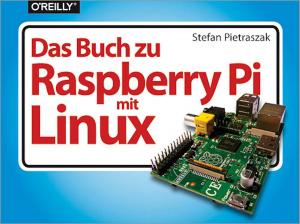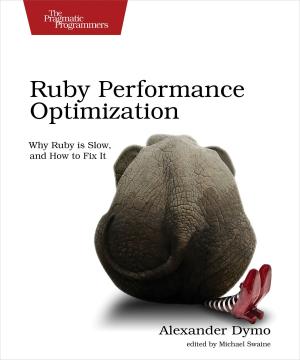The Scrum Guide Unfolds
The Guide to Innovation & Flexibility With Agile Software Development
Nonfiction, Computers, Advanced Computing, Information Technology, Programming, Software Development| Author: | Maik Seyfert | ISBN: | 1230001505030 |
| Publisher: | Maik Seyfert | Publication: | January 13, 2017 |
| Imprint: | Language: | English |
| Author: | Maik Seyfert |
| ISBN: | 1230001505030 |
| Publisher: | Maik Seyfert |
| Publication: | January 13, 2017 |
| Imprint: | |
| Language: | English |
Scrum is based on a set core of values, principles, roles, and practices. This book sets to highlight these different aspects of Scrum. It is a good read to people new to Scrum and want to learn what it is all about. Experienced people who have used Scrum before will also find the information helpful as it dives deeper into the practices in Scrum.
This book is not meant to replace the Scrum Guide. It is a complementary resource meant to help teams implement Scrum practices. It is meant to help Scrum teams understand the basic principles behind Scrum and implement them for maximum effectiveness. What is covered in this book goes beyond the Scrum Guide to offer deeper insights into the benefits and pitfalls of the concepts, tools, and practices.
Table of contents
Introduction
- What is Scrum?
1.1 History of Scrum
1.2 Underlying Principles of Scrum
1.3 Strengths and Benefits of Scrum
1.4 What Projects are Best Suited for Scrum?
1.5. Scrum Pillars
1.6. Scrum Values
- - The Scrum Roles and their Interactions
2.1. Product Owner
2.2. The Scrum Master
2.3. Characteristics of a great Scrum Master
2.4. The Developer Team
2.5. Factors limiting the effectiveness of a team
2.6. Characteristics of a great development team
- - Ceremonies and Timeboxes
3.1. Scrum Release Planning Meeting
3.2. The Sprint
3.3. Sprint Planning
3.4. Daily Scrum
3.5. Sprint Review
3.6. Sprint Retrospective
3.7. Backlog Refinement/Grooming
3.8 The Three Amigos
- - Scrum Artifacts
4.1. The Product Backlog
4.2. Sprint Backlog
4.3. Software Increment
- - Transparency
5.1 Artifact Transparency
5.2. Transparency supporting factors
5.3. Definition of Done
5.4. How to Profit from Scrum’s Transparency
- - Scrum Implements the Agile Manifesto
6.1. Individuals and Interactions over Processes and Tools
6.2. Working software over comprehensive documentation
6.3. Customer Collaboration over Contract Negotiation
6.4. Responding to Change over Following a Plan
Conclusion
About the Author
The author, Maik Seyfert, is an Agile practitioner and coach with 10 years real project experience, which he offers to everyone with this book.
Scrum is based on a set core of values, principles, roles, and practices. This book sets to highlight these different aspects of Scrum. It is a good read to people new to Scrum and want to learn what it is all about. Experienced people who have used Scrum before will also find the information helpful as it dives deeper into the practices in Scrum.
This book is not meant to replace the Scrum Guide. It is a complementary resource meant to help teams implement Scrum practices. It is meant to help Scrum teams understand the basic principles behind Scrum and implement them for maximum effectiveness. What is covered in this book goes beyond the Scrum Guide to offer deeper insights into the benefits and pitfalls of the concepts, tools, and practices.
Table of contents
Introduction
- What is Scrum?
1.1 History of Scrum
1.2 Underlying Principles of Scrum
1.3 Strengths and Benefits of Scrum
1.4 What Projects are Best Suited for Scrum?
1.5. Scrum Pillars
1.6. Scrum Values
- - The Scrum Roles and their Interactions
2.1. Product Owner
2.2. The Scrum Master
2.3. Characteristics of a great Scrum Master
2.4. The Developer Team
2.5. Factors limiting the effectiveness of a team
2.6. Characteristics of a great development team
- - Ceremonies and Timeboxes
3.1. Scrum Release Planning Meeting
3.2. The Sprint
3.3. Sprint Planning
3.4. Daily Scrum
3.5. Sprint Review
3.6. Sprint Retrospective
3.7. Backlog Refinement/Grooming
3.8 The Three Amigos
- - Scrum Artifacts
4.1. The Product Backlog
4.2. Sprint Backlog
4.3. Software Increment
- - Transparency
5.1 Artifact Transparency
5.2. Transparency supporting factors
5.3. Definition of Done
5.4. How to Profit from Scrum’s Transparency
- - Scrum Implements the Agile Manifesto
6.1. Individuals and Interactions over Processes and Tools
6.2. Working software over comprehensive documentation
6.3. Customer Collaboration over Contract Negotiation
6.4. Responding to Change over Following a Plan
Conclusion
About the Author
The author, Maik Seyfert, is an Agile practitioner and coach with 10 years real project experience, which he offers to everyone with this book.















